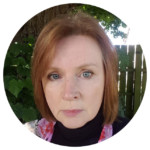
He died on the 27th July 2013, at a friend’s house, from an overdose of heroin. I was on holiday in Barcelona with my other children when it happened – I wonder if I’d been there would it have been different.
I had known about his use of non-prescription drugs for a long time, and we had many arguments about it. He tried to explain about rights and the hypocrisy of prohibiting some drugs and not all. Of making judgements about some users and not others. He explained that the majority of the crime associated with drugs surrounded the fact that they were illegal. I could understand his words but couldn’t get away from the fact that they were ‘dangerous’ and I wanted him to be safe.
On the 22nd of April 2013 we found the syringe of heroin and Aidan told us he was addicted. He told me that if he could take heroin and not be addicted then he would continue but he said it wasn’t possible for him. He said heroin was like getting into a warm bed on a cold night. He said he wanted to be free from addiction but that he would continue to take other drugs. He didn’t tell us or the majority of his friends about heroin, he was too ashamed. Even for many of those who use other drugs, heroin is a step too far.
Because he didn’t want to swap one addiction for another, methadone treatment wasn’t an option for Aidan. He came off heroin by reducing his use and seeing a CBT counsellor. There is an astounding strength to be seen in a person who ‘fights’ addiction, I don’t believe that I could have been so strong.
It was during this time that I finally understood that prohibition was ineffective and was in fact dangerous and I accepted that if his behaviour didn’t bring harm to someone else, then he had the right to do what he chose to do. I learned not to judge the people who sold him heroin, they were the same as him he said, addicts, but addicts who had no-one to help them.
When he bought a new bag of heroin he always took a trial dose. I asked why he couldn’t just take a little less each time. He said that a bag of heroin wasn’t the same as paracetamol, with every tablet containing the same 500mg of paracetamol. With a bag of heroin, you didn’t know what you were getting – that’s the risk of leaving drugs in the hands of criminal gangs.
On the week-end before he died Aidan stood outside, stretching his arms above his head and looking at the garden and sky. He came in and told me that it was the first time in three years that he’d seen the world like that, and since he was a scientist he then talked about photosynthesis. He was energized. I hugged him and told him that was all I wanted, that it wasn’t about drugs but it was about his seeing the wonder in the world again. He hugged me back. I knew he was free from his addiction but I also knew that he would lapse, we’d talked about that, we didn’t see it as the end, just part of the journey.
He lapsed on the 27th July, the heroin was too strong. If his dose of heroin had been regulated like a dose of paracetamol or if he had been able to use heroin assisted recovery or if he hadn’t felt that he would be judged or if I had understood a little sooner, then he might be alive.
Instead my darling boy, my first child, is dead.